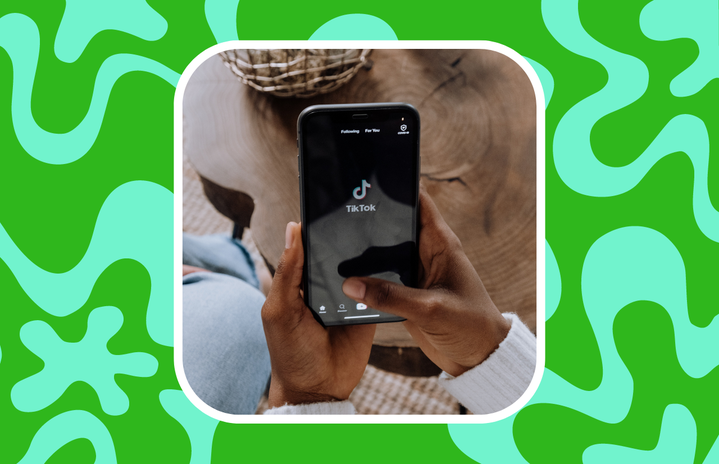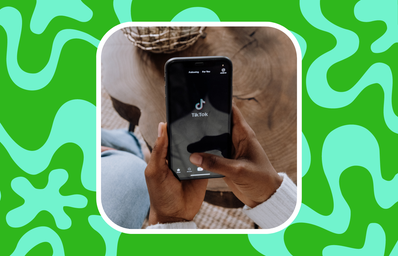TikTok has been an active presence in popular culture and common lifestyle ever since the release of the app in 2016. It immediately competed with other social media apps, like Instagram. I was in high school when it was trending, but I did not download it due to the limited storage of data on my phone. I got a new phone at the beginning of this year, and finally last month, I decided to get the app and make an account, unsure of what to expect.
My Immediate Observations
There were several unfamiliar selections on TikTok, however, the pattern of having an “explore page”, or in TikTok’s case, a “for you page” stayed consistent. Its presentation of content is incredibly straightforward, with you simply watching and scrolling on repeat. I also saw how little borders TikTok’s “for you page” has, which is a way to keep the user occupied with very few distractions; they can keep scrolling for hours without even realizing it. It’s a dangerous, yet smart, design choice.
In another tab, there is the most appealing and successful tool on TikTok: the search bar. With it, you can look for certain songs and audio with general ease, and if you ever scroll past a video you wanted to save, you are able to look for it by selecting certain filtering options. Content creators found it impossible to look for the audio they needed.
On the profile, there is a tab for liked content and saved content, just like in other social media apps. I prefer Instagram’s profile structure because of how it organizes its saved content, where you can easily create multiple folders for different posts by just pressing down on the save button. With TikTok, you would need to go into the folder itself and add it individually, which can cause difficulty looking for the very post you wanted to save in certain folders. I admit that I have mostly given up on adding to certain collections because this function infuriates me, but that may be because I am not used to it yet. What I also found intriguing is that when you watch a TikTok video, and check the profile of the content creator, you can find the location of the video you watched on their profile. This may not be the reason why this was designed, but I find this function useful when the content creator is making a series of posts so I am able to find the remaining parts.
How TikTok Curates Content
When introducing me to TikTok, my friends said that the most appealing aspect of it is how easy it is to curate your “for you page,” and using it for a few days alone completely proved their point. There is an option called “not interested” that you can access if you press down on the video, and if you use that function, that video will completely disappear. With Instagram, there is a similar function, however, it only marks it with a censor; the post will still remain on the explore page. Especially for those who want only certain content, or would want to avoid certain topics or content creators, this is advantageous and creates a more comfortable experience. My friends have additionally commented about how quickly TikTok is able to assess the specific content that the user wants through a few follows and scrolls. It was almost uncomfortable how well TikTok knew what I wanted within a few hours of using it, but arguably it did make the app more appealing. There were a few ads on the “for you page”, but the design and the style of these videos disguised it to be a normal post, and the scrolling function is so easy to use that overall, these ads were less obnoxious than those on other apps. The way that the “for you page” is made is successful overall, but it can disrupt a person’s everyday life. The ease can lead to addictive scrolling, where people can go out their entire day just going through TikTok. I found that on some days, I would feel completely drained, not realizing I spent a whole evening just on TikTok.
The Content Creators and the Audience
As most of us know, there are different stereotypes of people who use certain kinds of social media. Twitter users are usually the most commented on, with its free function of sharing opinions often causing great arguments to occur. TikTok, as mentioned before, only allows video content, which in my opinion, is more dangerous to content creators. Additionally, the comments I have seen are very concerning. It is entirely possible for content creators to never reveal their faces, but many do, especially when they show people their daily lives. With apps like Twitter, there is a feeling of anonymity that protects those who use it, but with TikTok, there seems to be a vulnerability of sharing more than necessary which has me fearing for the younger audience that openly uses it. In addition, the function of being able to respond to comments with a video has many positives and negatives. On one hand, you can directly respond to a question or comment with more information, whether to answer or prove it or to completely reject it. It allows for more opinions to be shared and for greater audience engagement. However, it could also bring attention to those that do not need it, based on the idea that all publicity is good publicity. There is no real way to tell if people truly mean what they say and post, so it is easy to just type out an eye-directing comment to get free views and account visits, especially if they express a hateful view.
Final Thoughts
TikTok is easy to access and get into through its algorithm and its functions, but like most social media sites, it is not entirely perfect. Because of its ease, it can be harmful to a user’s mental and emotional health and even have them completely disengage from reality. However, I am joyous to see people who have fostered a kind community through TikTok when it’s impossible in real life, which I believe the true intention of social media is.


